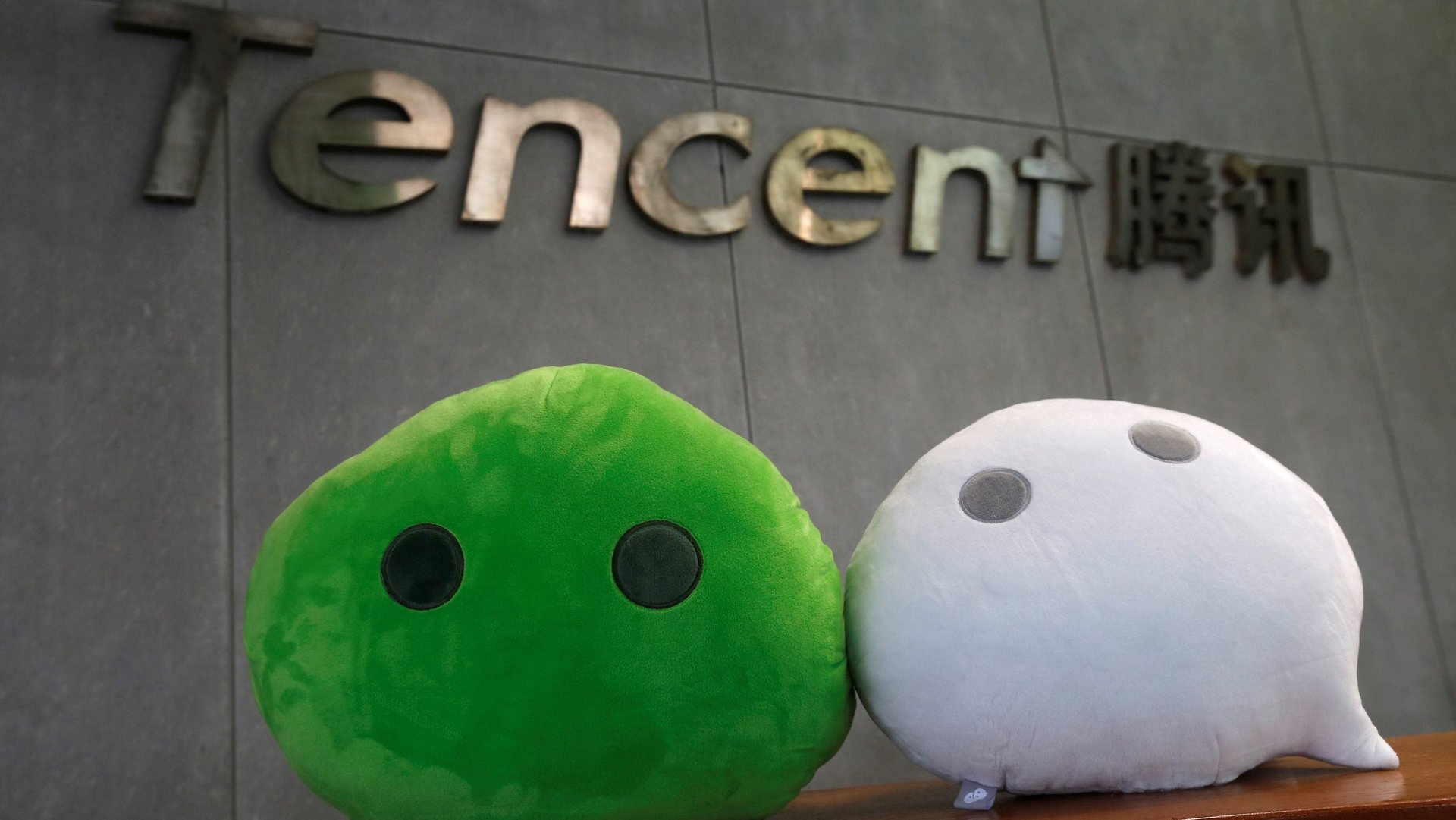Even China’s state media can’t escape WeChat’s expanding image censorship
China’s state media, just like everyone else in the country, is feeling the heavy hand of censors.


China’s state media, just like everyone else in the country, is feeling the heavy hand of censors.
According to a report published today (July 16) on real-time filtering on WeChat by Citizen Lab, a research group based at the University of Toronto, the chat app’s censorship scope is now so pervasive that it’s even ensnaring state media outlets—typically seen to be only reporting on news that’s already passed the censorship test—highlighting the increasing severity of the crackdown on free speech on China’s internet.
Citizen Lab said that its findings show that Tencent, the tech giant that owns WeChat, now censors much more than just “negative information by the government,” with even “neutral references to government policy and screenshots of official announcements accessible via government websites” deemed too sensitive. It said that Tencent has likely “over-censored images.”
The researchers studied 220 images provided in a database compiled by WeChatscope, a censorship monitoring project run by the University of Hong Kong. The results showed that the most censored images on WeChat among those in the sample pertained to what researchers called “government-related issues” such as cartoons mocking China’s justice system, and a portrait of president Xi Jinping created by an Italian artist ahead of Xi’s visit to the country in March. The second-most censored category of images were those related to “events” such as the Cultural Revolution, the Tiananmen Square crackdown, Huawei, actress Fan Bingbing’s tax evasion scandal, and even the 2018 US midterm elections.
Among the 220 censored posts, Citizen Lab found that five images had been posted by Global Times, known for its hawkish, nationalistic views. Those images, posted in January to the newspaper’s public WeChat account, were in relation to the Huawei saga and have been deleted from the platform. The post in question criticized those of Chinese ethnicity in Canada who had been protesting against Huawei, whose CFO Meng Wanzhou was arrested in Vancouver last year at the request of American authorities. In one image, two women were shown holding placards demanding the extradition of Meng to the US, while another showed a picture of Guo Baosheng, a Chinese political dissident whom the Global Times fingered as the organizer of the protests against Meng.
In addition to the Huawei-linked post that was highlighted in the Citizen Lab report, other Global Times posts collected in WeChatscope’s database have also been deleted, Quartz found, including a February post on Canadian prime minister Justin Trudeau’s political troubles, and one article about countries that were considering banning Chinese smartphone giant ZTE.
In other instances, state news agency Xinhua’s content was also censored, including an article on an official investigation into a vaccine scandal that was censored in July last year. A picture post of a fireworks show during an international conference attended by the country’s leaders in June 2018 was also censored. It’s unclear in all these cases what triggered the censorship.
Jeff Knockel, co-author of the report, said it’s hard to speculate how WeChat’s censorship mechanism really works. He noted, however, that the censorship only works on Chinese accounts registered with a Chinese phone number. “If one non-China account sends an image to another non-China account, then you don’t receive the kind of political and social censorship that we study in this report,” Knockel said.